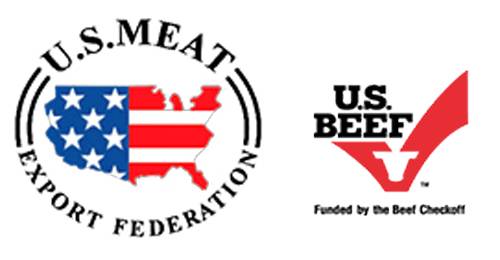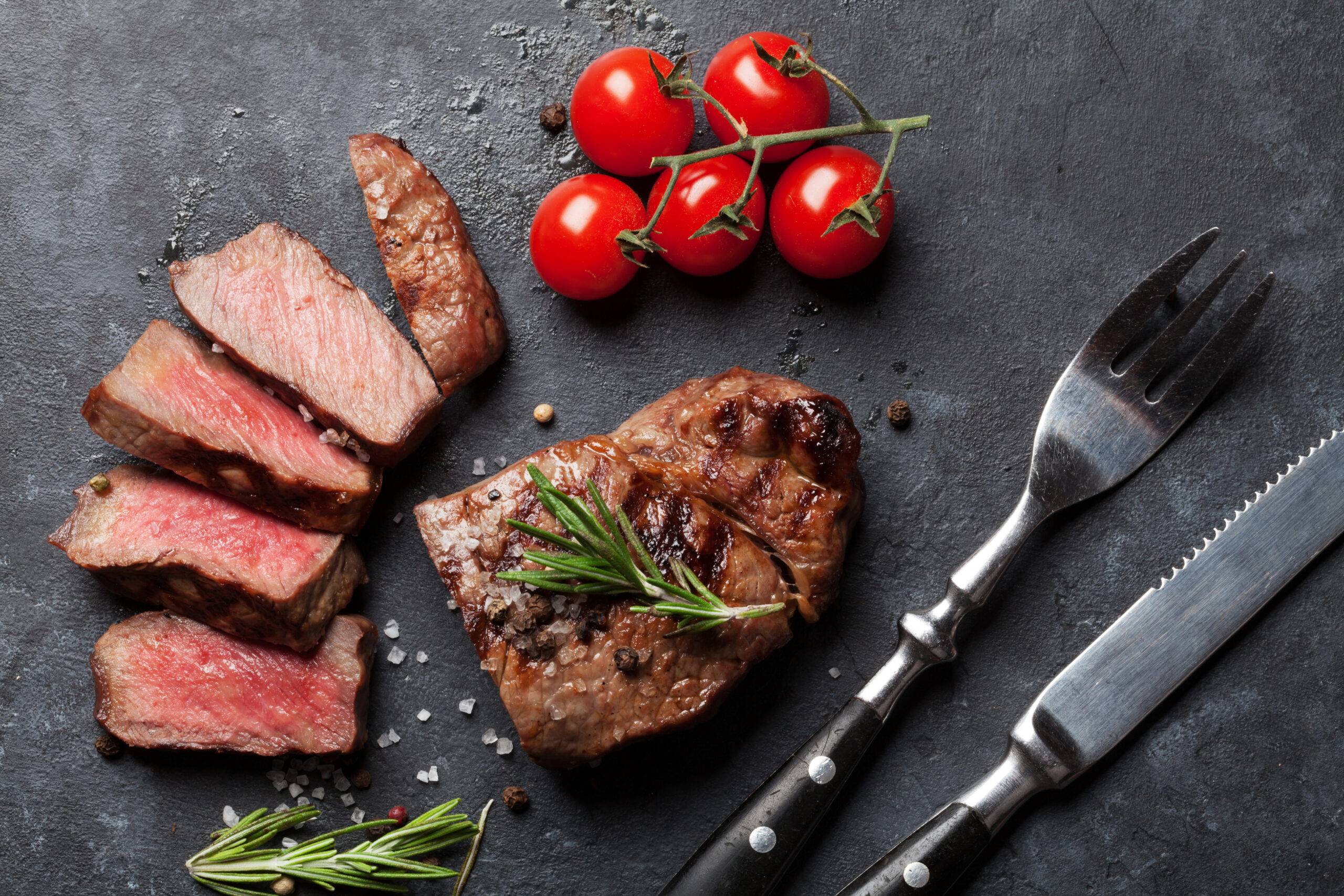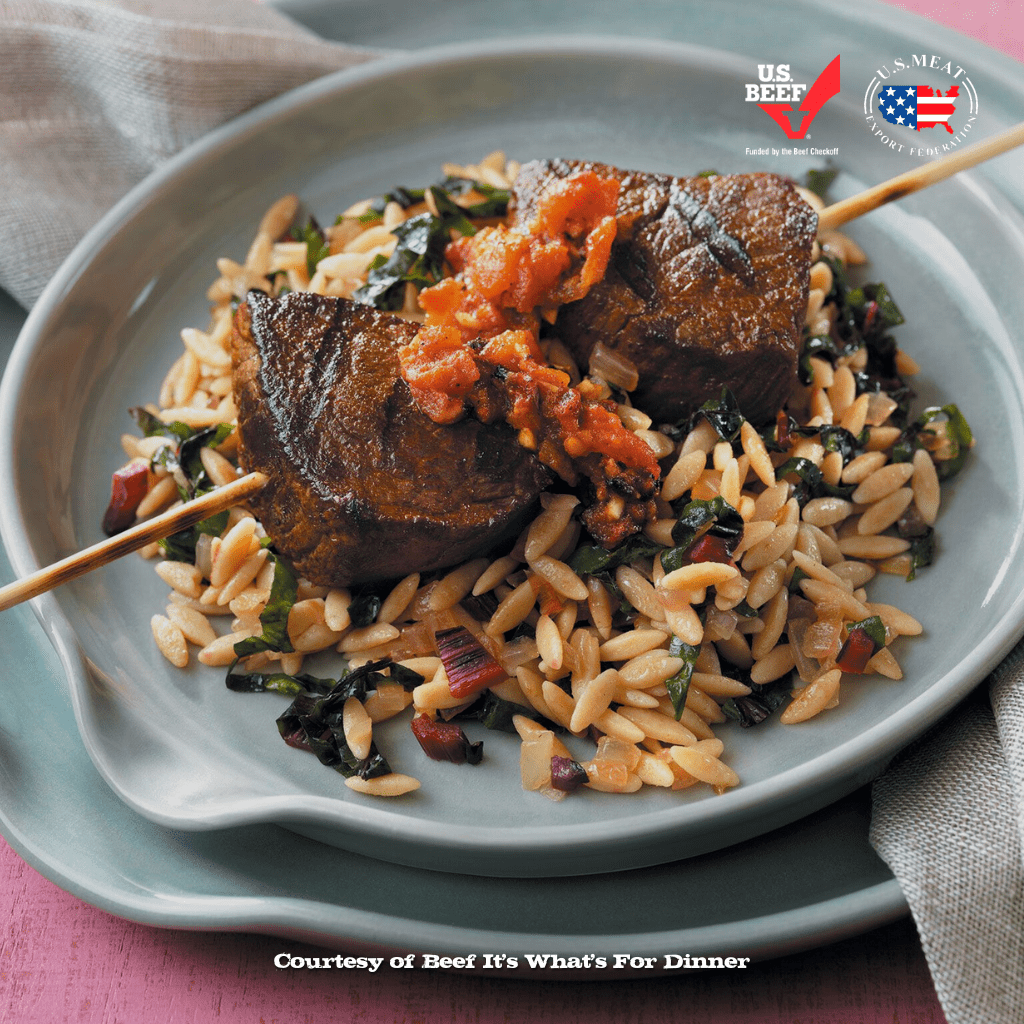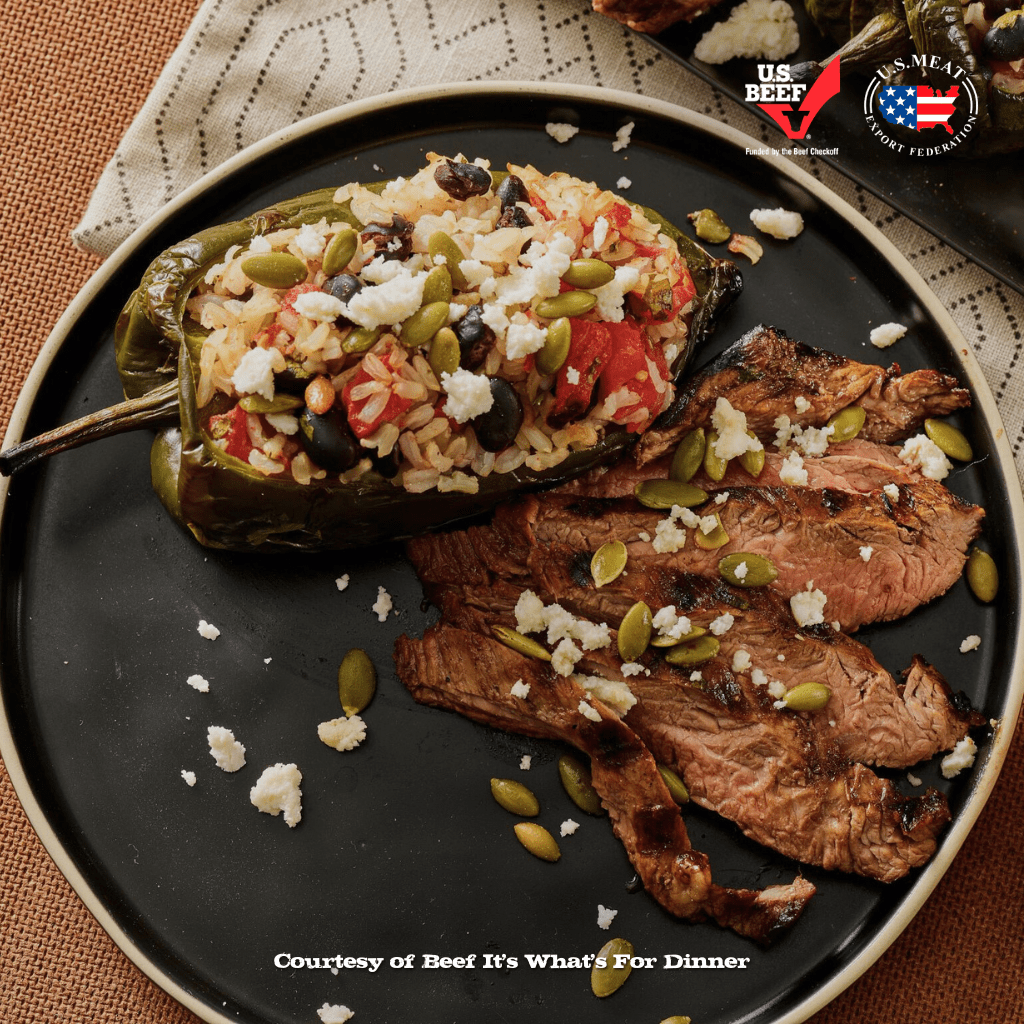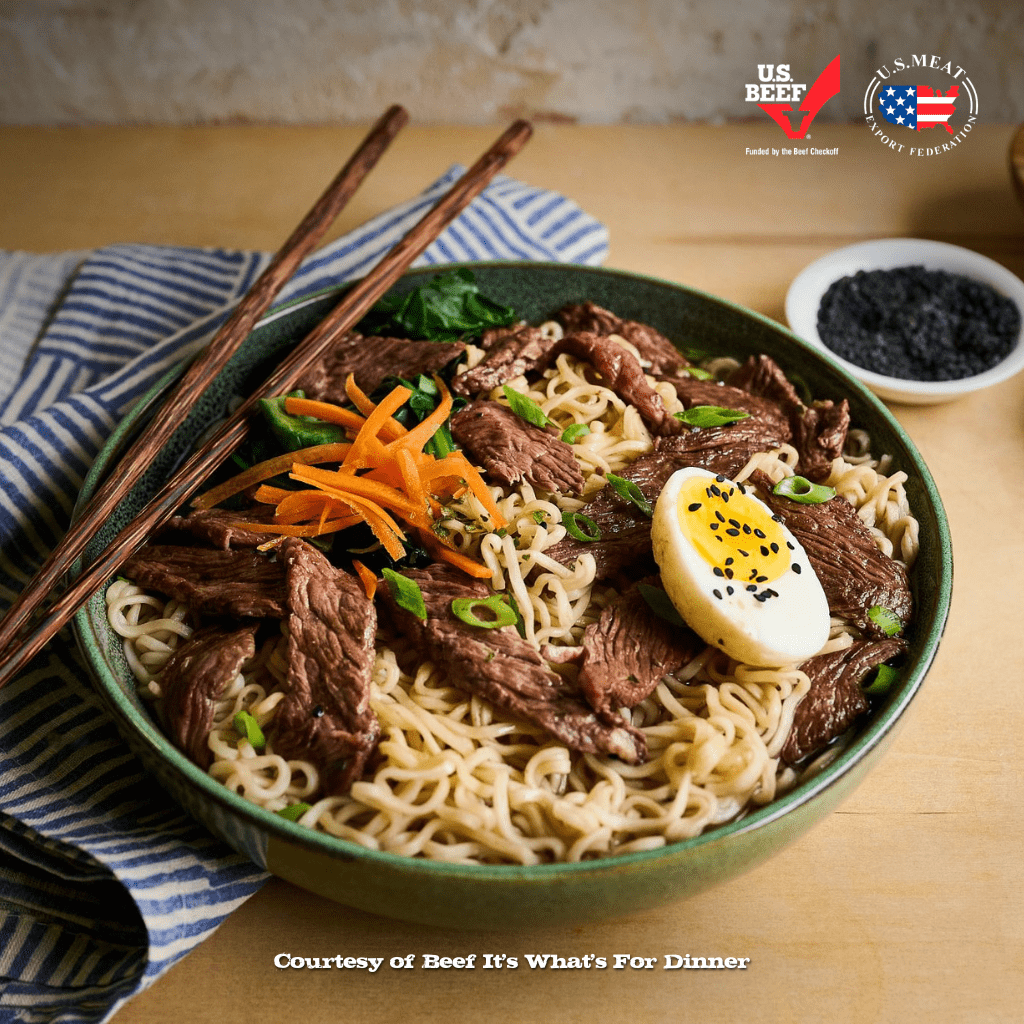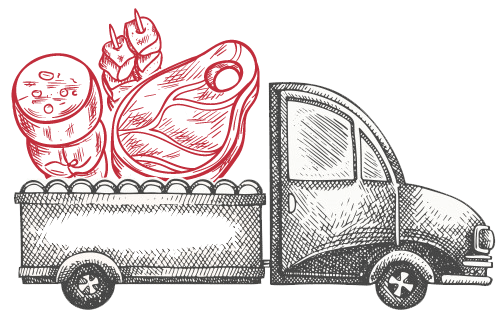
What is USMEF
USMEF is the most vertically integrated trade association in the meat and livestock industry. USMEF represents beef/veal producers and feeders, pork producers and feeders, lamb producers and feeders, packers and processors, purveyors and traders, oilseeds producers, feed grains producers, farm organizations and supply and service organizations.
Looking For The Perfect Cut? Here Is Our Guide
We put at your disposal a guide with all the beef cuts, their characteristics and their uses. Always cook the perfect piece for every occasion!
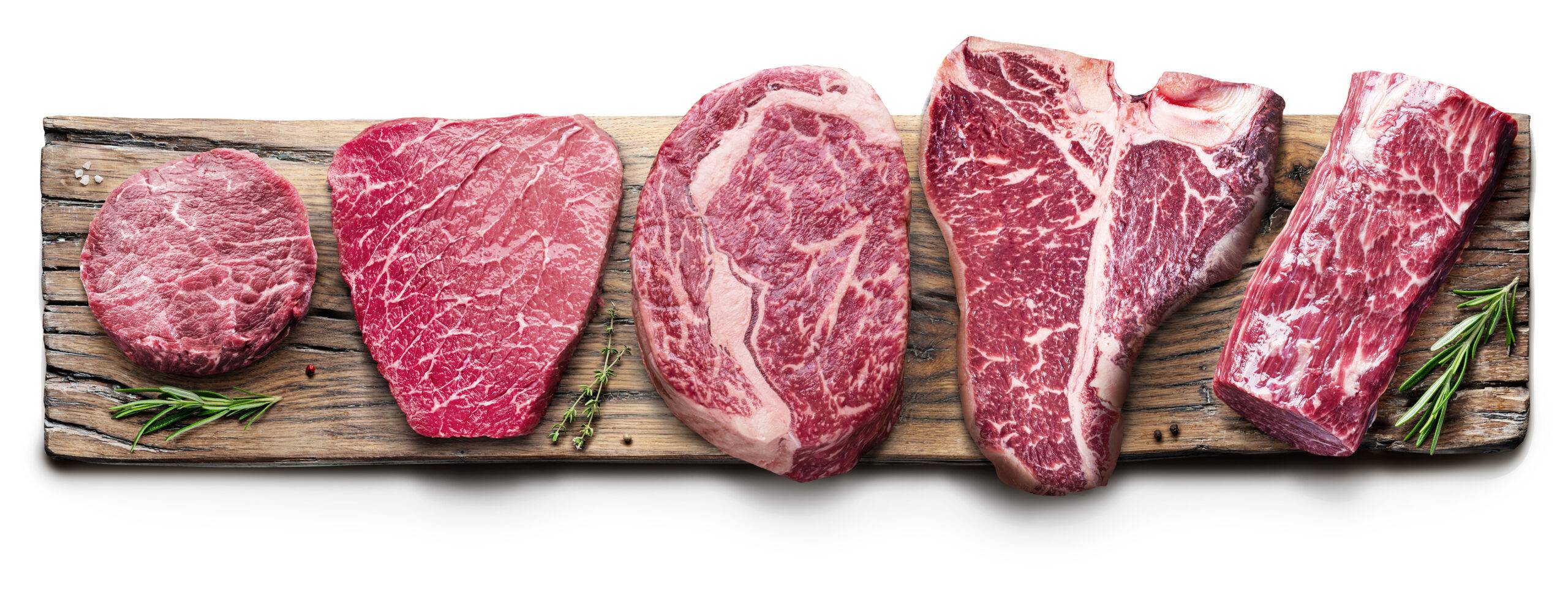
For Consumers
Get to know the most succulent beef recipes, cooking tips and the nutritional value of the best US Beef.
For Chefs
In our chefs’ section you can find videos, types of beef and pork cuts, and handling and storage tips.
For Distributors
Learn everything you need to know about the origin of USA beef. In addition to its origin, we address breeding and care.
FAQ
The Non-Hormone Treated Cattle Program (NHTC) has been in effect since 1999 when the European Union (EU) and the U.S. put into effect measures to control and facilitate the trade of non-hormone treated beef. All farms, ranches, and feedlots approved under this program, and all those that raise beef destined for shipment to the European Union (EU), are non-hormone treated cattle and must be listed on the FSIS PartnerShare website.
The U.S. beef industry is known for the tender, flavorful, grain-fed beef that it produces. U.S. beef goes through a rigorous inspection process and is subject to strict government guidelines to ensure the highest levels of safety.
American beef producers have known for generations how important it is to keep their animals healthy and contented. Their commitment to providing quality care proves itself in the data: U.S. herds represent only 8% of the world’s cattle yet provide 18% of the world’s beef.
Modern beef production requires fewer resources than the equivalent system in 1977, using 69.9% of animals, 81.4% of feedstuffs, 87.9% of the water, and only 67.0% of the land required to produce 1 billion kgs of beef. This reduced the waste outputs and beef’s carbon footprint by 16.3% from 1977 levels.
USMEF is the most vertically integrated trade association in the meat and livestock industry. USMEF represents beef/veal producers and feeders, pork producers and feeders, lamb producers and feeders, packers and processors, purveyors and traders, oilseeds producers, feed grains producers, farm organizations and supply and service organizations.
The mission of USMEF is “to increase the value and profitability of the U.S. beef, pork, and lamb industries by enhancing demand for their products in export markets through a dynamic partnership of all stakeholders.” Simply put, USMEF is “putting U.S. meat on the world’s table.”
Headquartered in Denver, USMEF has offices in Seoul, Tokyo, Hong Kong, Beijing, Shanghai, Shenyang, Singapore, Taipei, Mexico City and Monterrey. USMEF also has special market representatives covering South China, the Middle East, EU, Africa, Russia, former Soviet Republics, and the Caribbean.
USMEF carries out market development activities in more than 80 countries. These activities fall into several primary areas:
- Marketing: Creating demand in international markets for U.S. meat through promotions, trade seminars, consumer education, advertising and public relations.
- Trade Servicing: Working to bring buyer and seller together and by conducting both market and product research.
- Market Access: Providing the U.S. government and industry with the market intelligence necessary to secure, maintain and develop fair and reasonable access to international markets.
USMEF is funded from a variety of sources, including membership dues, private contributions and beef, pork, lamb, corn, sorghum and soybean checkoff programs. In addition, as a cooperator with the U.S. Department of Agriculture, USMEF also receives funds through the Market Access, Emerging Market and Foreign Market Development programs.
The Non-Hormone Treated Cattle Program (NHTC) has been in effect since 1999 when the European Union (EU) and the U.S. put into effect measures to control and facilitate the trade of non-hormone treated beef. All farms, ranches, and feedlots approved under this program, and all those that raise beef destined for shipment to the European Union (EU), are non-hormone treated cattle and must be listed on the FSIS PartnerShare website.
American beef producers have known for generations how important it is to keep their animals healthy and contented. Their commitment to providing quality care proves itself in the data: U.S. herds represent only 8% of the world’s cattle yet provide 18% of the world’s beef.
Modern beef production requires fewer resources than the equivalent system in 1977, using 69.9% of animals, 81.4% of feedstuffs, 87.9% of the water, and only 67.0% of the land required to produce 1 billion kgs of beef. This reduced the waste outputs and beef’s carbon footprint by 16.3% from 1977 levels.
If you would like to contact the USMEF team, you can send us an email to eu@usmef.org or jschuele@usmef.org. If you need more information, please visit the contact page: https://www.usa-beef.org/contact/
If you want to know more about USMEF we recommend you to watch the videos we have on our website (https://www.usa-beef.org/videos/) about recipes, events and more info about the US Industry.
